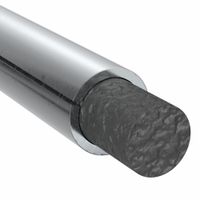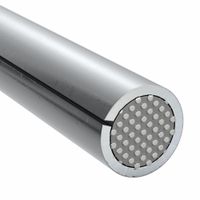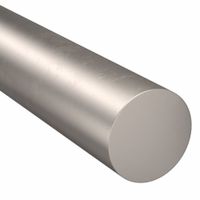Call +(254) 703 030 000 / 751 483 999 / 721 704 777
- Home
- Welding
- Filler Metals
- Welding Wire
.....Read More
Frequently Asked Questions
What is the difference between MIG and flux-cored welding wire?
MIG (Metal Inert Gas) welding and flux-cored welding are both arc welding processes that use consumable wire electrodes, but they differ in several key aspects:
1. **Shielding Method**:
- **MIG Welding**: Uses a solid wire electrode and requires an external shielding gas (such as argon, CO2, or a mix) to protect the weld pool from atmospheric contamination.
- **Flux-Cored Welding**: Utilizes a tubular wire filled with flux. The flux generates a shielding gas and slag to protect the weld, eliminating the need for external gas in some cases.
2. **Wire Composition**:
- **MIG Wire**: Solid and homogeneous, typically made of mild steel, stainless steel, or aluminum.
- **Flux-Cored Wire**: Tubular with a core of flux material, which can include deoxidizers, arc stabilizers, and alloying elements.
3. **Welding Environment**:
- **MIG Welding**: Best suited for indoor environments due to the need for shielding gas, which can be disrupted by wind.
- **Flux-Cored Welding**: More versatile for outdoor use, especially self-shielded flux-cored wire, as it doesn't rely on external gas.
4. **Penetration and Deposition**:
- **MIG Welding**: Generally provides cleaner welds with less spatter, suitable for thinner materials.
- **Flux-Cored Welding**: Offers deeper penetration and higher deposition rates, making it ideal for thicker materials and heavy-duty applications.
5. **Skill Level**:
- **MIG Welding**: Easier to learn and control, making it suitable for beginners.
- **Flux-Cored Welding**: Can be more complex due to slag removal and potential for more spatter.
6. **Cost**:
- **MIG Welding**: Typically involves higher initial setup costs due to the need for gas cylinders and regulators.
- **Flux-Cored Welding**: Can be more cost-effective for certain applications, especially when using self-shielded wire.
How do I choose the right welding wire for my project?
To choose the right welding wire for your project, consider the following factors:
1. **Base Material**: Match the welding wire to the base material. For example, use carbon steel wire for carbon steel, stainless steel wire for stainless steel, and aluminum wire for aluminum.
2. **Welding Process**: Different processes require specific wires. For MIG welding, use solid or flux-cored wire. For TIG welding, use filler rods. Ensure compatibility with your welding machine.
3. **Wire Diameter**: Select the wire diameter based on the thickness of the material. Thicker materials require larger diameters for adequate penetration, while thinner materials need smaller diameters to prevent burn-through.
4. **Shielding Gas**: The type of shielding gas affects wire choice. For example, CO2 or a CO2/argon mix is common for carbon steel, while pure argon is used for aluminum and stainless steel.
5. **Position and Environment**: Consider the welding position (flat, vertical, overhead) and environment (indoor, outdoor). Flux-cored wires are better for outdoor use due to their resistance to wind.
6. **Mechanical Properties**: Ensure the wire provides the necessary mechanical properties, such as tensile strength and impact resistance, for the application.
7. **Code and Specification Compliance**: Adhere to industry standards and project specifications, such as AWS or ISO, which may dictate specific wire types.
8. **Cost and Availability**: Balance cost with performance. Some wires may be more expensive but offer better performance or ease of use.
9. **Manufacturer Recommendations**: Consult the welding machine and wire manufacturer’s guidelines for compatibility and optimal performance.
10. **Trial and Testing**: If uncertain, conduct tests to evaluate the wire’s performance on your specific material and application.
By considering these factors, you can select the appropriate welding wire to ensure strong, reliable welds for your project.
What shielding gas should I use with MIG welding wire?
The choice of shielding gas for MIG (Metal Inert Gas) welding, also known as GMAW (Gas Metal Arc Welding), depends on the material being welded and the desired weld characteristics. Here are common options:
1. **Carbon Steel**:
- **Argon/CO2 Mix (75% Argon, 25% CO2)**: This is the most common mix for carbon steel. It provides good arc stability, reduced spatter, and good weld bead appearance.
- **100% CO2**: Offers deeper penetration and is more economical but can result in more spatter and a less stable arc.
2. **Stainless Steel**:
- **Argon/CO2/Oxygen Mix (98% Argon, 2% CO2 or 1-2% Oxygen)**: This mix helps in achieving a stable arc and good weld appearance. Oxygen improves fluidity and penetration.
- **Argon/Helium/CO2 Mix**: Adding helium can increase heat input, which is beneficial for thicker materials.
3. **Aluminum**:
- **100% Argon**: Pure argon is typically used for aluminum welding, providing a stable arc and good cleaning action.
- **Argon/Helium Mix**: Adding helium can increase penetration and heat input, useful for thicker sections.
4. **Copper and Nickel Alloys**:
- **100% Argon**: Generally used for these materials to ensure a stable arc and good weld quality.
5. **Specialty Metals (e.g., Titanium)**:
- **100% Argon**: Often used due to its inert properties, preventing oxidation and contamination.
The choice of shielding gas affects weld penetration, bead shape, spatter levels, and overall weld quality. It's important to consider the specific requirements of the welding project, including material thickness, position, and desired mechanical properties, when selecting a shielding gas.
Can I use flux-cored wire without gas?
Yes, you can use flux-cored wire without gas. Flux-cored arc welding (FCAW) is a versatile welding process that can be performed with or without shielding gas, depending on the type of flux-cored wire used. There are two main types of flux-cored wires: self-shielded and gas-shielded.
Self-shielded flux-cored wire is designed to be used without external shielding gas. It contains a flux core that, when heated during the welding process, generates its own shielding gas to protect the weld pool from atmospheric contamination. This makes it suitable for outdoor welding or in environments where wind or drafts could disperse external shielding gas. Self-shielded flux-cored wire is often used for construction, shipbuilding, and heavy equipment repair due to its portability and ability to weld thicker materials.
Gas-shielded flux-cored wire, on the other hand, requires an external shielding gas, typically a mixture of carbon dioxide and argon, to protect the weld. This type of wire is generally used in indoor or controlled environments where wind is not a factor, and it often provides a cleaner weld with less spatter compared to self-shielded wire.
When using self-shielded flux-cored wire, it's important to ensure that your welding equipment is compatible and properly set up for this type of wire. Additionally, be aware that self-shielded flux-cored welding can produce more smoke and fumes, so adequate ventilation is necessary to ensure a safe working environment.
What are the advantages of metal-cored welding wire?
Metal-cored welding wire offers several advantages:
1. **Increased Deposition Rates**: Metal-cored wires have a higher deposition rate compared to solid wires, which leads to faster welding speeds and increased productivity.
2. **Improved Penetration**: These wires provide deeper penetration, which is beneficial for welding thicker materials and ensuring strong welds.
3. **Reduced Spatter**: Metal-cored wires produce less spatter than solid wires, resulting in cleaner welds and reducing the need for post-weld cleaning.
4. **Better Arc Stability**: The arc stability is enhanced, leading to smoother welds and easier control for the welder.
5. **Versatility**: They can be used in a variety of positions and are suitable for both thin and thick materials, making them versatile for different applications.
6. **Reduced Defects**: The formulation of metal-cored wires helps in reducing common welding defects such as porosity and slag inclusions.
7. **Improved Mechanical Properties**: Welds made with metal-cored wires often exhibit better mechanical properties, such as tensile strength and toughness.
8. **Lower Hydrogen Content**: These wires typically have lower hydrogen content, reducing the risk of hydrogen-induced cracking.
9. **Cost Efficiency**: Although the initial cost may be higher, the increased productivity and reduced need for rework and cleaning can lead to overall cost savings.
10. **Ease of Use**: Metal-cored wires are generally easier to use, requiring less operator skill and training, which can be beneficial in environments with less experienced welders.
11. **Compatibility with Automation**: They are well-suited for automated welding processes, enhancing efficiency in high-volume production settings.
How do I prevent spatter when using welding wire?
To prevent spatter when using welding wire, follow these steps:
1. **Optimize Voltage and Amperage**: Ensure your welding machine is set to the correct voltage and amperage for the material and wire size. Incorrect settings can cause excessive spatter.
2. **Use the Right Wire**: Select the appropriate wire type and diameter for your welding application. Using the wrong wire can lead to poor arc stability and increased spatter.
3. **Maintain Proper Stick-Out**: Keep a consistent and appropriate stick-out length (the distance from the contact tip to the workpiece). Typically, this should be about 3/8 to 1/2 inch for MIG welding.
4. **Adjust Travel Speed**: Maintain a steady and appropriate travel speed. Moving too fast or too slow can cause spatter. Practice to find the optimal speed for your setup.
5. **Check Gas Flow**: Ensure the shielding gas flow rate is correct. Insufficient gas coverage can lead to oxidation and spatter. Typically, a flow rate of 20-25 cubic feet per hour (CFH) is recommended.
6. **Clean the Workpiece**: Remove rust, oil, paint, and other contaminants from the workpiece. Clean surfaces promote better arc stability and reduce spatter.
7. **Use Anti-Spatter Spray**: Apply anti-spatter spray to the workpiece and nozzle to prevent spatter from sticking. This makes cleanup easier and reduces defects.
8. **Maintain Equipment**: Regularly clean and replace worn contact tips, liners, and nozzles. Proper maintenance ensures consistent wire feed and arc quality.
9. **Optimize Welding Technique**: Use a push technique rather than a pull technique to direct spatter away from the weld pool. Practice steady hand movements to maintain a stable arc.
10. **Use Pulsed MIG Welding**: If available, use pulsed MIG welding settings, which can significantly reduce spatter by controlling the heat input and arc characteristics.
What is the best way to store welding wire to prevent contamination?
To prevent contamination, store welding wire in a clean, dry, and temperature-controlled environment. Use the following practices:
1. **Original Packaging**: Keep the wire in its original packaging until use. The packaging is designed to protect against moisture and contaminants.
2. **Climate Control**: Store in a climate-controlled area to maintain consistent temperature and humidity levels. Ideal conditions are a temperature of 60-80°F (15-27°C) and humidity below 60%.
3. **Desiccants**: Use desiccants in storage areas to absorb moisture and prevent rust or corrosion.
4. **Sealed Containers**: If the original packaging is compromised, transfer the wire to airtight containers or vacuum-sealed bags to protect from air and moisture.
5. **Vertical Storage**: Store spools vertically to prevent deformation and tangling, which can lead to feeding issues.
6. **Clean Environment**: Ensure the storage area is free from dust, dirt, and chemical fumes that could contaminate the wire.
7. **Regular Inspection**: Periodically inspect the wire for signs of rust, corrosion, or contamination. Replace any compromised wire immediately.
8. **FIFO Method**: Use the First-In-First-Out (FIFO) method to ensure older stock is used first, reducing the risk of degradation over time.
9. **Separate Storage**: Store different types of welding wires separately to avoid cross-contamination.
10. **Handling Precautions**: Use clean gloves when handling welding wire to prevent oils and dirt from contaminating the surface.
By following these practices, you can effectively prevent contamination and ensure the quality and performance of welding wire.


